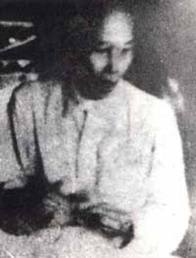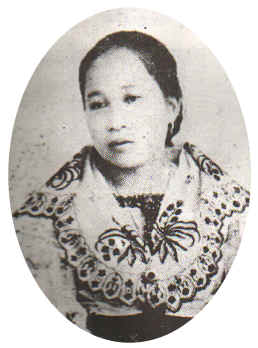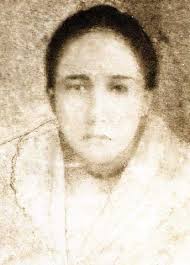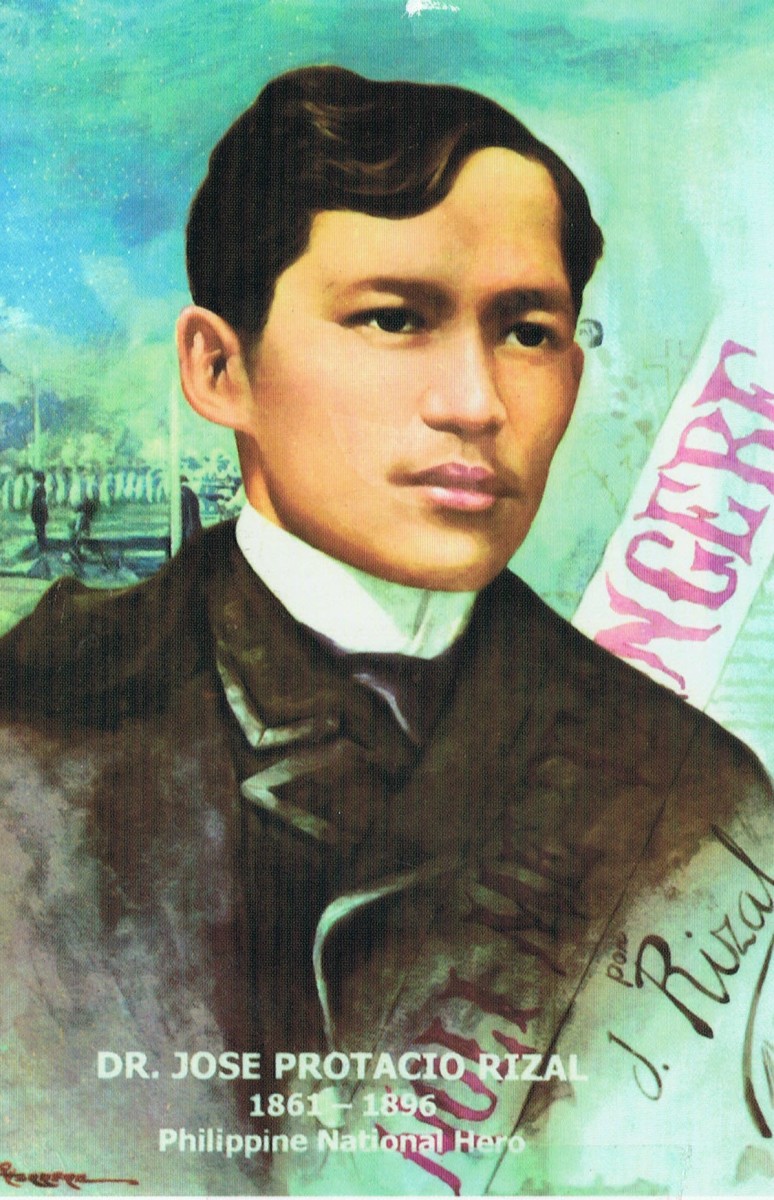Jose Rizal Family
Jose Rizal’s thirteen-member-family consisted of his father Francisco Mercado II, his mother Teodora Alonso Realonda, himself, nine sisters and one brother.
- Jose Rizal came from a wealthy family in Calamba, Laguna, Considered one of the largest families in those times, the 13-member-family consisted of his father Francisco Mercado II, his mother Teodora Alonso Realonda, himself, nine sisters and one brother.
The Family Background of Jose Rizal

-----------------------------------------------------------------------------------------------
Don Francisco Mercado Rizal
(1818 - 1898)
- The father of Jose Rizal was of Chinese origin.
- The great grandfather of Francis Mercado Rizal was Domingo Lam- co who came from a for a foreign province in China. They first settled in Parian district, but because of land disputes, they settled in Binan, Laguna. He married Ined de la Rosa who was also a Chinese Mestiza who bore him two childer (Francisco and Josefa).
- Don Francisco was the youngest of 13 offsprings of Juan and Cirila Mercado. Born in Binan, Laguna on April 18. 1818; studied in San Jose College, Manila; and died in Manila.
- Domingo gave the surname Mercado (which means a merchant) to his son Francisco, because they came from a line of respectable merchants. To him, Mercado is also a nice Spanish name that would banish the prejudice directed toward Chinese sounding surnames.
- In 1849, General Narciso Claveria decreed that all native should have a distinctive family name. Don Francisco was not satisfied with his surname, so he adopted the Spanish name Rizal. Which meant a green field for pasture or a field which is green after the grain has been cut. In his baptismal records, his name was written as Don Francisco Rizal Mercado.
- In his younger days, he was described as a “model father” and as a man “of solid shoulders, strong constitution, rather tall, serious and noble.” He studied Latin and philosophy at the College of San Jose, Manila. He died at the age of 80, a year after the hero’s execution.

Teodora Alonso Realonda de Quintos
(1827 - 1911)
- The mother of Jose Rizal was a native of Manila, who for several years had been residing with her mother in Calamba, Laguna. All the branches of her family was richer than her husband. There were numerous lawyers and priests among them and they were influential in country. She was born in Santa Cruz, Manila on Novemeber 14, 1827 and died in 1913 in Manila.
- The mother of Jose Rizal who was the second child of Lorenzo Alonso and Brijida de Quintos. She studied at the Colegio de Santa Rosa. She was a business-minded woman, courteous, religious, hard-working and well-read. She is not a woman of ordinary culture; she knows literature and speaks Spanish better than Jose Rizal. She is a mathematician and has read many books. She was a business woman of no mean ability, but this fact did not prevent her from looking well after the comfort and education of her big family. Twice imprisoned by the authorities for flimsy reasons, she bravely endured the persecutions heaped upon her and her family. She was baptized in Santa Cruz, Manila, Novemeber 18, 1827, as Teodora Morales Alonzo.
Saturnina Rizal
(1850 - 1913)
- She is the eldest child of the Rizal-Alonzo marriage. She married Manuel Timoteo Hidalgo of Tanauan, Batangas. She and her mother provided Jose with good basic education that in the age of three, Jose already knows his alphabet. She was always been a loving ‘Ate’ Neneng to Jose.
- Her husband has been the hero’s favorite brother in law, for the correspondence between them lasted from Rizal’s student days until the year of his execution. The Hidalgos had five children (Alfredo, Adela, Abelardo, Amelia, and Augusto). In 1909 Saturnina published Pascual H. Poblete’s Tagalog translation of the Noli Me Tangere.

Paciano Rizal
(1851 - 1930)
- He is the only brother of Jose Rizal and the second child. Studied at San Jose College in Manila; became a farmer and later a general of the Philippine Revolution.
- He helped their parents to choose a tutor for young Jose and later acted as Jose’s guardian in school. Paciano helped Jose go to Europe in 1882 secretly and was the one who told their parents about his departure. He constantly updated Jose about their family and what was going on in the country through letters, and for five years he sends his brother 50 pesos, later 35 pesos monthly.
- He became an agriculturist, like his father, he had a college education in Manila. He was a second father to his younger brother Jose and gave him wise council. Immediately after hero’s execution, he joined the revolutionary army and rose to the rank of Major General. He returned to his farm in Los Baños after the restoration of peace and led the life of gentleman-farmer and an exemplary citizen. He learned English through self-study and his favorite periodical was the Philippine Free Press. With Severina Decena of Los Baños, he had two children, a boy and a girl (Decena and Emiliana).
Narcisa Rizal
(1852 - 1939)
- She is the third child. She married Antonio Lopez at Morong, Rizal; a teacher and musician.
- It is said that Doña Sisa could recite from memory almost all the poems of Dr. Rizal. She had nine children (Emilio, Angelica, Antonio, Consuelo, Leoncio, Isabel, Francisco, Arsenio, and Fidela).
Olimpia Rizal
(1855 - 1887)
- She is the fourth child. Married Silvestre Ubaldo; died in 1887 from childbirth.
- Her husband was a telegraph operator from Manila. Following her husband, she moved from one station to another, like Bulacan, Albay, and Manila. They had only one child (Aristeo, Cesario and another boy, both of whom died young).

Lucia Rizal
(1857 - 1919)
- She is the fifth child. She Married Matriano Herbosa of Calamba, who died of cholera in 1889. Her husband was denied a Christian burial because he was the brother in law of Dr. Jose Rizal. She had eight children (Delfina, Concepcion, Patrocinio, Teodosio, Estanislao, Paz, Victoria, and Jose).
Maria Rizal
(1859 - 1945)
- She is the sixth child. She married Daniel Faustino Cruz, scion of a wealthy family of Biñan, Laguna. She had five children (Encarnacion, Mauricio, Petrona, Paz, and Prudencio, the last three of whom died young).
Concepcion Rizal
(1862- 1865)
- She is the eight child. She died at the age of three.

Josefa Rizal
(1865 - 1945)
- She is the ninth child. An epileptic and died a spinster. She lived together with Trinidad “Trining” until death separated them. She became members of the women’s section of the Katipunan.
Trinidad Rizal
(1868 - 1951)
- She is the tenth child. She died a spinster and the last of the family to die. She also became members of the women’s section of the Katipunan with Josefa.
Soledad Rizal
(1870 - 1929)
- She is the youngest child married Pantaleon Quintero of Calamba. She also studied at La Concordia College, where she and Leonor Rivera were classmates and chums. She had five children (Trinitario, Amelia, Luisa, and Serafine and Felix, both of whom died young).
- She became a teacher and is said to have been “the best educated” among the sister of Rizal.
Social Class
- The fifth generation family of Jose Rizal belongs to the middle class, but because of his hard working father, they catapulted among the wealthy ranks in Calamba, Laguna. However it all went down when Don Francisco failed to give an agent of the hacienda a turkey because his flock had been decimated by death. Since then the administrators of the hacienda doubled the rent and has raised it for several times, but Don Francisco refused to pay the rent and took the matter to the court. Other tenants followed his example and refused to pay the rent as well.
- The administrator of the hacienda evicted them along with other tenants. All their property were destroyed. Because of this, the family of Jose Rizal had to transfer to Los Baños and start over again.


